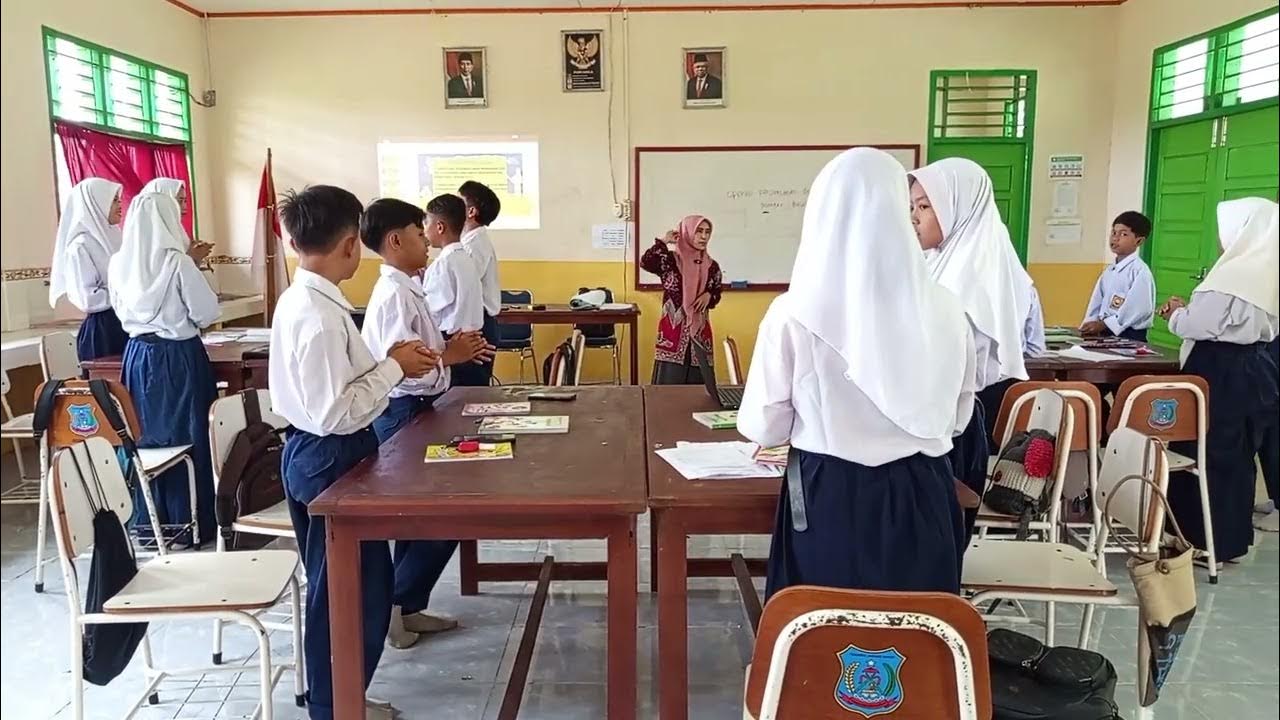Two and Two, by Babak Anvari
Summary
TLDRIn this classroom interaction, the teacher is guiding students through a math lesson, focusing on simple addition. While encouraging participation, the teacher maintains discipline, asking students to repeat answers and write down equations. There’s an underlying tension as a few students challenge the instructions, but the teacher firmly reinforces the concepts, ensuring everyone follows along. The lesson is designed to engage students and ensure they understand basic arithmetic, while also promoting respect and order in the classroom.
Takeaways
- 😀 The teacher greets the students and introduces changes to the curriculum.
- 😀 Students are asked to pay attention to the new lessons and listen carefully to their teacher.
- 😀 The teacher stresses the importance of following instructions and being diligent in class.
- 😀 A math problem involving simple addition (2+2) is introduced and discussed humorously.
- 😀 The teacher repeatedly asks students to answer questions about the sum of 2+2, with some confusion from the students.
- 😀 Students express doubt and resistance, questioning the answers given by the teacher.
- 😀 The teacher maintains patience, despite the repetitive misunderstanding, but also shows frustration.
- 😀 Humor arises from the student's incorrect answers and the teacher's exaggerated reactions.
- 😀 There is a playful back-and-forth between the teacher and the students, especially when a student gives a wrong answer.
- 😀 The teacher emphasizes the importance of paying attention and focusing on the lesson, despite distractions.
- 😀 The teacher encourages students to take notes and write down the math problems, repeating instructions for clarity.
Q & A
What is the primary focus of the classroom interaction in the script?
-The primary focus of the classroom interaction is a math lesson where the teacher is guiding students through simple arithmetic problems, particularly focusing on the addition of numbers like 'two plus two'.
What is the teacher's approach to engaging the students during the lesson?
-The teacher repeatedly asks the students to confirm and repeat answers, encouraging them to actively participate by speaking aloud, while also ensuring they remain attentive and follow the lesson without distractions.
Why does the teacher insist on repeating answers like 'two plus two equals five'?
-The teacher seems to be using repetition as a method to reinforce learning, even though the answer given ('two plus two equals five') is incorrect. This could be part of a teaching strategy to ensure students are paying attention, or it may be an intentional error to test students' knowledge.
How does the teacher maintain control of the classroom during the lesson?
-The teacher uses a firm tone and asks students to maintain silence when necessary. The teacher also corrects students when they give incorrect answers and stresses the importance of following instructions precisely.
What role do the students play in this classroom setting?
-The students are actively engaged in the lesson, answering questions and repeating instructions. They are expected to follow the teacher’s commands and contribute to the classroom environment by providing the correct answers when asked.
Why does the teacher criticize a student's answer about 'two plus two equals four'?
-The teacher seems to be emphasizing that the correct answer for 'two plus two' should be 'five', despite the student's correct response ('four'). This could be part of a teaching strategy to challenge the students or test their attentiveness, making sure they don't simply rely on automatic responses.
What does the teacher ask the students to do at the end of the lesson?
-At the end of the lesson, the teacher asks the students to open their notebooks and write down the equation 'two plus two equals five', while repeating the phrase aloud as they do so. This repetition is likely intended to solidify the lesson.
What seems to be the atmosphere in the classroom based on the transcript?
-The atmosphere appears somewhat tense but focused. The teacher enforces discipline, and students are expected to remain quiet and attentive, while the occasional mistakes or lapses in attention are met with correction.
How does the teacher respond to students who are not following the lesson correctly?
-The teacher directly addresses students who make errors or are distracted by criticizing their actions. The teacher uses a strong tone to maintain control and refocus the students on the task at hand.
What might the teacher's insistence on the incorrect answer ('two plus two equals five') suggest about the lesson's objective?
-The teacher's insistence on the incorrect answer might suggest that the lesson is focused on encouraging attentiveness, critical thinking, or challenging students to question and engage more deeply with the material, rather than simply memorizing facts.
Outlines

このセクションは有料ユーザー限定です。 アクセスするには、アップグレードをお願いします。
今すぐアップグレードMindmap

このセクションは有料ユーザー限定です。 アクセスするには、アップグレードをお願いします。
今すぐアップグレードKeywords

このセクションは有料ユーザー限定です。 アクセスするには、アップグレードをお願いします。
今すぐアップグレードHighlights

このセクションは有料ユーザー限定です。 アクセスするには、アップグレードをお願いします。
今すぐアップグレードTranscripts

このセクションは有料ユーザー限定です。 アクセスするには、アップグレードをお願いします。
今すぐアップグレード関連動画をさらに表示

PPL 2. PENJUMLAHAN BILANGAN KELAS 1

Teaching Cambridge Primary Maths

Praktek PKM Kelas 2 SD - PGSD UT

TUGAS PKM 2 Robiatul Adawiyah 044765526

Pembelajaran Matematika Dengan Pendekatan RME (Realistic Mathematics Education) Klas 1 SD 3 Grobogan

Video UKIN PPG Piloting 2 mata pelajaran Matematika SMP kelas 7 (edit)
5.0 / 5 (0 votes)
